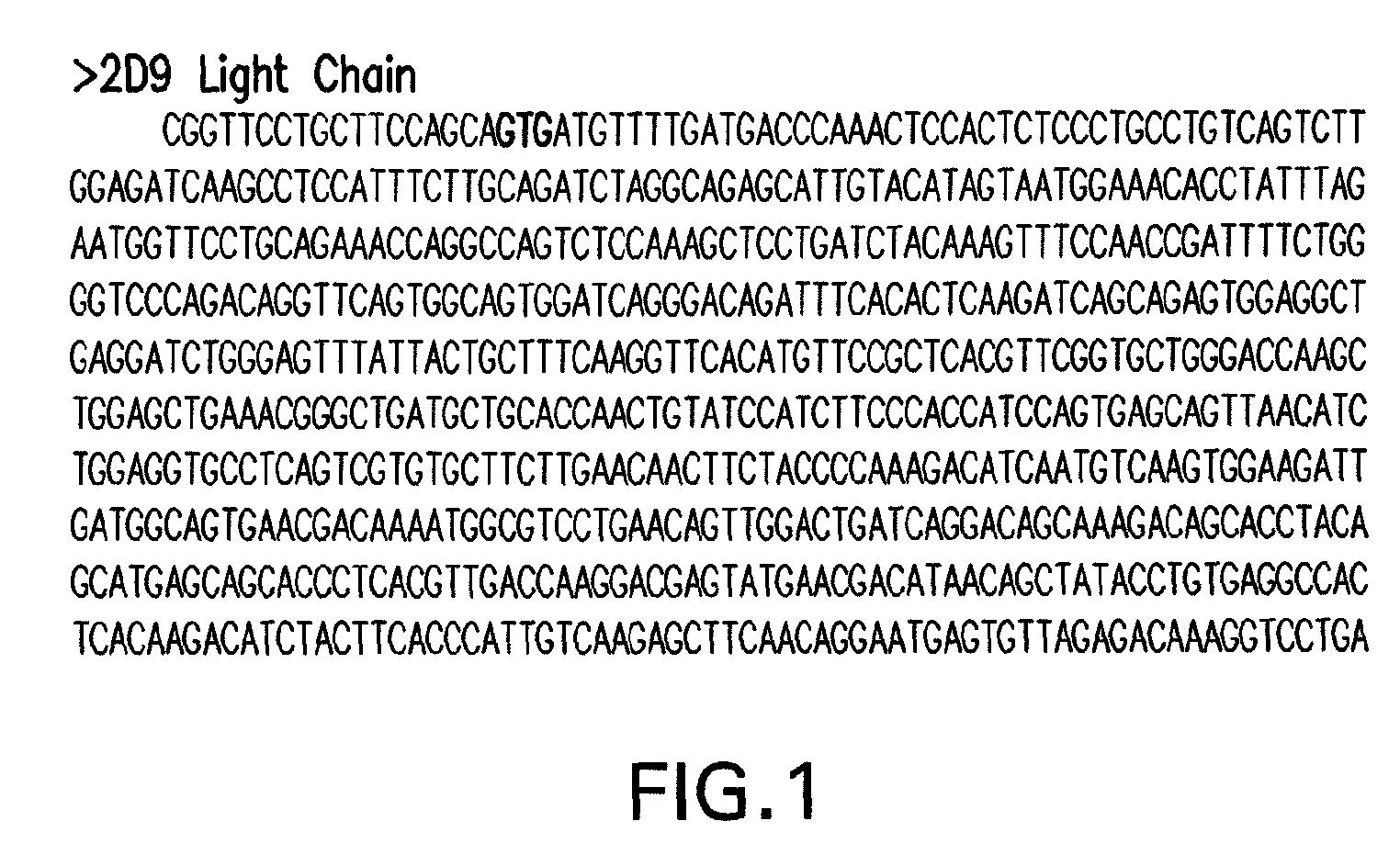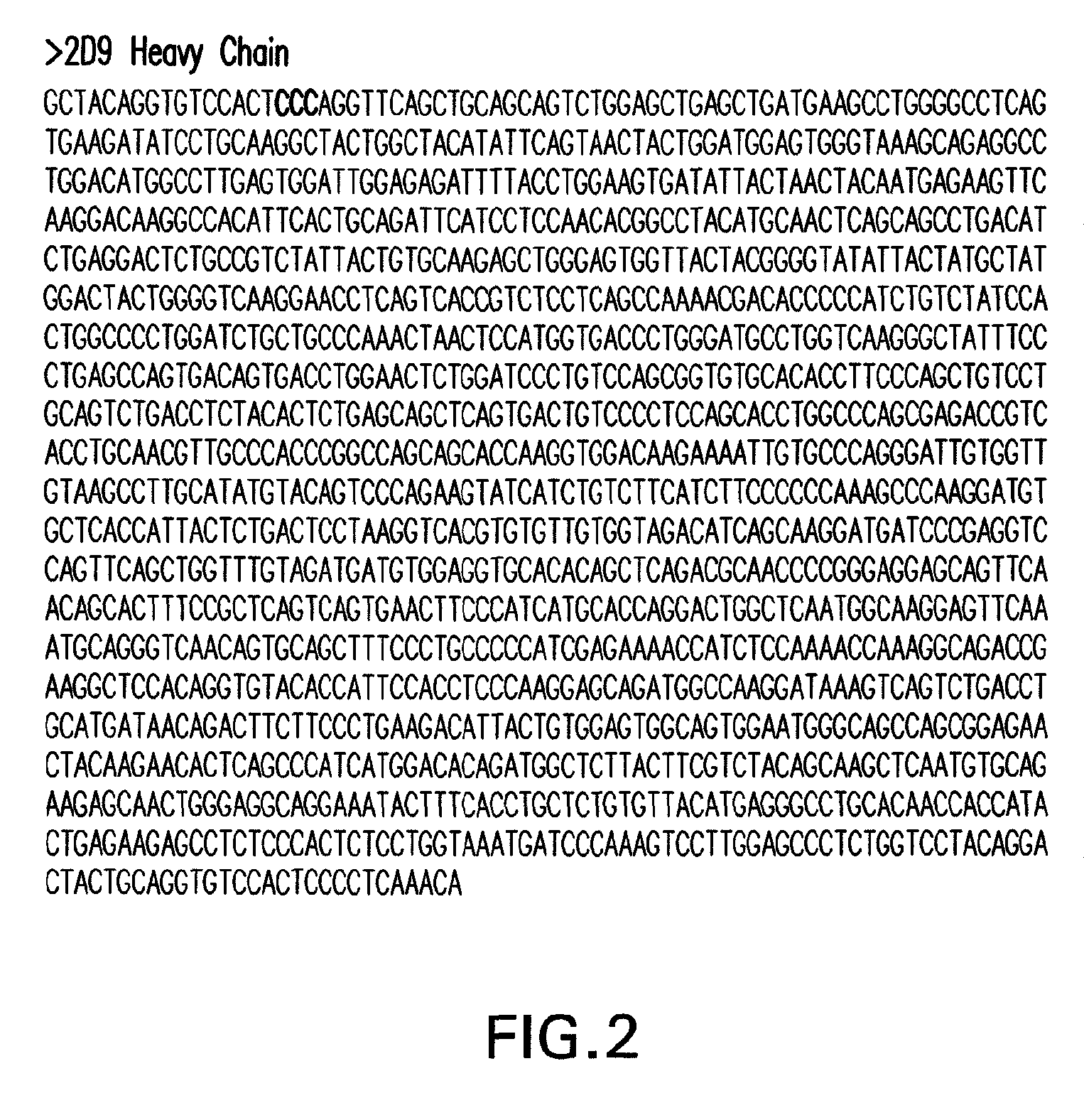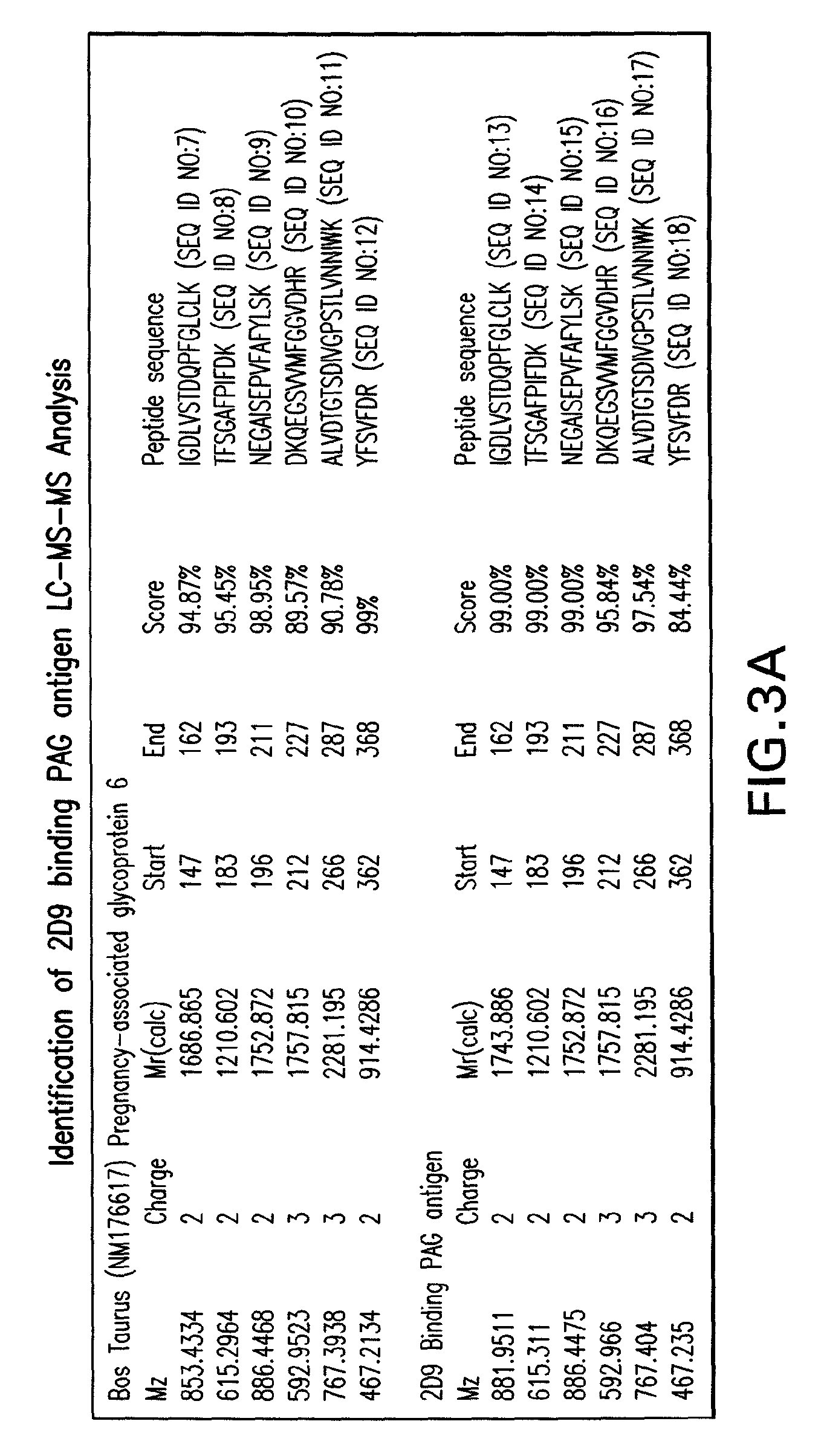Compositions and methods for early pregnancy diagnosis
a technology of compositions and pregnancy diagnosis, applied in the field of veterinary medicine, reproductive biology and diagnostics, can solve the problems of affecting the use of peptides, affecting the quality of pregnancy, so as to achieve high sensitivity, diagnose pregnancy, and sensitive and accurate results
- Summary
- Abstract
- Description
- Claims
- Application Information
AI Technical Summary
Benefits of technology
Problems solved by technology
Method used
Image
Examples
example 1
Identification of 2D9 Binding PAGs
[0117]Studies were undertaken to identify the proteins binding to 2D9, to characterize and sequence the 2D9 antibody, and to map the binding sites of PAG to 2D9. In order to accomplish this, two approaches (described below) were under taken.
[0118]Materials and Methods.
[0119]Immunoprecipitation of PAGs with 2D9-Coated Magnetic Beads.
[0120]Purified 2D9 was coupled to Tosyl-activated Dynal magnetic beads according to manufacturer's directions (Dynal). The antibody coated magnetic beads were incubated with 100 micrograms of PAG enriched preparation (obtained from day 55 placenta) for 30 min in 1×PBS and washed extensively with the same buffer. The bound proteins were eluted by using pH 3.0 acetic acid and subjected gel and Western blot analysis. Western blot was developed with rabbit anti-PAG polyclonal antibodies. The immuno-reactive protein bands were cut from SDS-PAGE and subjected to LC-MS-MS analysis after trypsin digestion (FIG. 3).
[0121]Immuno-Af...
example 2
Protein and mRNA Sequencing
[0132]Protein Sequencing of Purified 2D9.
[0133]The sequencing of 2D9 was performed in order to identify PAG-antigen binding sequences of 2D9. The sequencing of 2D9 was accomplished by protein and DNA sequencing methods. First, heavy and light chains of 2D9 antibody were separated by denaturing gel electrophoresis. The gel bands were excised and subjected to trypsin and chymotrypsin enzyme digestions, separately. The resulting peptides were separated and sequenced by LC-MS-MS (Liquid Chromatography-Mass Spectrometry-Mass Spectrometry) method. The peptides with >90% confidence score in the mass and sequence analysis were selected. The resulting peptide sequences were used to assemble ˜80% of light chain sequence and ˜50% of heavy chain sequence.
[0134]Sequencing of 2D9 Heavy and Light Chain mRNA.
[0135]In a second approach, mRNA corresponding to 2D9 heavy and light chains were sequenced by using reverse transcription-polymerase chain reaction (RT-PCR) techniqu...
example 3
Feasibility Studies of an Immunoassay-Based Pregnancy Test in Cattle
[0138]A large-scale study was conducted to evaluate the economics of day 28 early pregnancy testing in the reproductive management of dairy cows. Study animals were located at two different sites, one in California and one in Wisconsin. 1,050 animals were assigned per site. Initial breeding was followed by either performance of an immunoassay based pregnancy test as described below, or by standard palpation. Samples were shipped to the laboratory overnight. The study used a sandwich ELISA optimized with rabbit anti-PAG polyclonal antibodies. The PAG ELISA used a cut off was 1.7 ng / ml, based on a trial study. Blood samples were collected on day 28 and shipped to laboratory for pregnancy testing. Pregnancy diagnosis was accomplished by PAG ELISA and a report of results was generated, and made available within 24 hours to farm personnel. Breeding decisions were made based on pregnancy diagnosis results from PAG test fo...
PUM
| Property | Measurement | Unit |
|---|---|---|
| mass to charge ratio | aaaaa | aaaaa |
| mass to charge ratio | aaaaa | aaaaa |
| temperatures | aaaaa | aaaaa |
Abstract
Description
Claims
Application Information
 Login to View More
Login to View More - R&D
- Intellectual Property
- Life Sciences
- Materials
- Tech Scout
- Unparalleled Data Quality
- Higher Quality Content
- 60% Fewer Hallucinations
Browse by: Latest US Patents, China's latest patents, Technical Efficacy Thesaurus, Application Domain, Technology Topic, Popular Technical Reports.
© 2025 PatSnap. All rights reserved.Legal|Privacy policy|Modern Slavery Act Transparency Statement|Sitemap|About US| Contact US: help@patsnap.com



